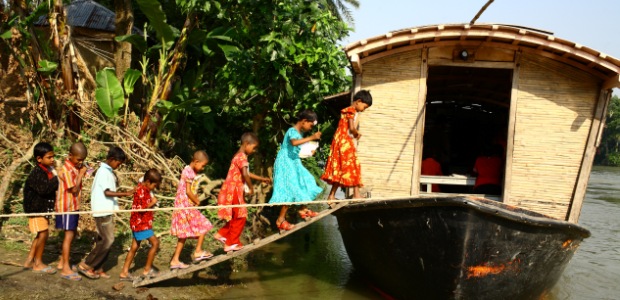Enhancing Resilience And Sustainable Development In Least Developed Countries

Table of Contents
Strengthening Economic Resilience in LDCs
A strong and diversified economy is the bedrock of resilience. LDCs often suffer from over-reliance on a few primary commodities, making them highly susceptible to global price fluctuations and economic downturns. Addressing this requires a multi-pronged approach.
Diversifying Economies and Reducing Dependence on Commodities
Over-reliance on primary commodities leaves LDCs vulnerable to external shocks. Diversification is key to building a more robust and resilient economy. This requires strategic investment and policy changes:
- Promoting diversification beyond primary commodities: Investing in manufacturing, technology, and services to reduce reliance on raw material exports.
- Investing in value-added industries: Processing raw materials domestically to increase export earnings and create higher-skilled jobs.
- Supporting small and medium-sized enterprises (SMEs): SMEs are the backbone of many economies, and providing them with access to finance, training, and markets is crucial.
- Developing robust trade infrastructure: Improving transportation, communication, and logistics networks to facilitate trade and attract investment.
- Attracting foreign direct investment (FDI) strategically: FDI can bring in capital, technology, and expertise, but it's vital to ensure it aligns with sustainable development goals.
Investing in Human Capital Development
A healthy, educated, and skilled workforce is essential for sustainable economic growth. Investing in human capital is not just a social responsibility; it's a crucial element of building economic resilience. Key strategies include:
- Improving education and skills training: Providing quality education and vocational training programs that equip individuals with the skills needed for the modern economy.
- Investing in healthcare and nutrition: A healthy population is a productive population. Investing in healthcare and nutrition improves worker productivity and reduces healthcare costs.
- Promoting gender equality and women's empowerment: Empowering women leads to significant economic and social benefits.
- Addressing youth unemployment: Creating job opportunities for young people prevents social unrest and fosters economic growth.
- Fostering entrepreneurship and innovation: Encouraging innovation and entrepreneurship creates new businesses and jobs, driving economic diversification.
Building Environmental Resilience in LDCs
LDCs are disproportionately affected by climate change and environmental degradation. Building environmental resilience is critical for their long-term survival and development.
Climate Change Adaptation and Mitigation
Climate change poses an existential threat to many LDCs. Adaptation and mitigation are crucial for their survival and development. Strategies include:
- Implementing climate-smart agriculture: Developing drought-resistant crops and improving water management techniques to increase food security.
- Investing in renewable energy sources: Reducing reliance on fossil fuels and transitioning to clean energy sources reduces greenhouse gas emissions and improves energy security.
- Developing early warning systems for natural disasters: Improving early warning systems saves lives and reduces the economic impact of natural disasters.
- Protecting biodiversity and ecosystems: Protecting biodiversity and ecosystems provides essential ecosystem services and enhances resilience to climate change.
- Promoting sustainable land management practices: Preventing land degradation and deforestation is crucial for maintaining soil fertility and preventing desertification.
Sustainable Natural Resource Management
Sustainable management of natural resources is vital for long-term economic viability and environmental protection. This necessitates:
- Implementing sustainable forestry practices: Promoting responsible forestry practices prevents deforestation and maintains biodiversity.
- Promoting responsible fishing: Sustainable fishing practices ensure the long-term health of fish stocks and livelihoods.
- Protecting water resources: Protecting water resources ensures access to clean water for drinking, agriculture, and industry.
- Reducing deforestation and land degradation: Preventing deforestation and land degradation is crucial for maintaining ecosystem services and preventing desertification.
- Implementing effective waste management systems: Implementing effective waste management systems reduces pollution and protects the environment.
Fostering Social Resilience and Inclusive Development in LDCs
Social resilience and inclusive development are critical for building a stable and prosperous future for LDCs.
Strengthening Governance and Institutional Capacity
Good governance is fundamental for building trust, attracting investment, and ensuring that development benefits all citizens.
- Promoting good governance and transparency: Establishing transparent and accountable institutions is essential for building trust and attracting investment.
- Strengthening rule of law and justice systems: A strong rule of law protects citizens' rights and ensures a fair and equitable society.
- Enhancing public sector efficiency: Improving public sector efficiency ensures that resources are used effectively and efficiently.
- Improving access to information and citizen participation: Empowering citizens through access to information and participation in decision-making strengthens governance.
- Fighting corruption: Corruption undermines development and erodes public trust.
Reducing Poverty and Inequality
Reducing poverty and inequality is crucial for building a more resilient and equitable society. This requires:
- Implementing social safety nets: Providing social safety nets such as unemployment benefits and food assistance protects vulnerable populations from shocks.
- Investing in social protection programs: Investing in social protection programs such as healthcare and education ensures that all citizens have access to basic services.
- Promoting inclusive growth and job creation: Ensuring that economic growth benefits all citizens, not just a select few.
- Addressing food insecurity: Improving food security reduces vulnerability to famine and malnutrition.
- Improving access to basic services (healthcare, education, sanitation): Ensuring access to basic services improves health outcomes and enhances human capital.
Conclusion
Enhancing resilience and sustainable development in Least Developed Countries requires a holistic approach that tackles economic, environmental, and social challenges simultaneously. By diversifying economies, investing in human capital, building environmental resilience, and fostering inclusive governance, LDCs can significantly strengthen their capacity to withstand shocks and achieve sustainable and equitable development. Continued investment in resilience and sustainable development in Least Developed Countries is not just a moral imperative, but a crucial step towards a more stable and prosperous global future. Let's collaborate to build stronger, more resilient nations. Continued commitment to strategies outlined above is vital for progress towards true and lasting resilience and sustainable development in Least Developed Countries.

Featured Posts
-
 Steelers Explore Trade Market For Top Wide Receiver
May 07, 2025
Steelers Explore Trade Market For Top Wide Receiver
May 07, 2025 -
 Understanding The Karate Kid Part Ii Themes And Character Development
May 07, 2025
Understanding The Karate Kid Part Ii Themes And Character Development
May 07, 2025 -
 Lexington Community Rallies Biker Charity Rides After House Explosion
May 07, 2025
Lexington Community Rallies Biker Charity Rides After House Explosion
May 07, 2025 -
 Ed Shiyrn Govori Za Riana
May 07, 2025
Ed Shiyrn Govori Za Riana
May 07, 2025 -
 Who Wants To Be A Millionaire Celebrity Special Analyzing The Famous Faces And Their Fortunes
May 07, 2025
Who Wants To Be A Millionaire Celebrity Special Analyzing The Famous Faces And Their Fortunes
May 07, 2025
